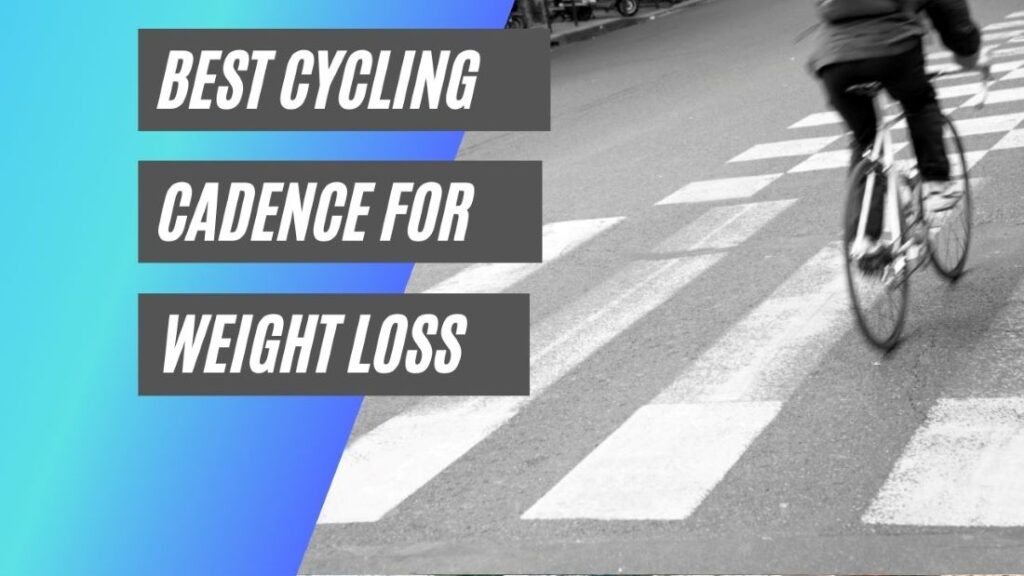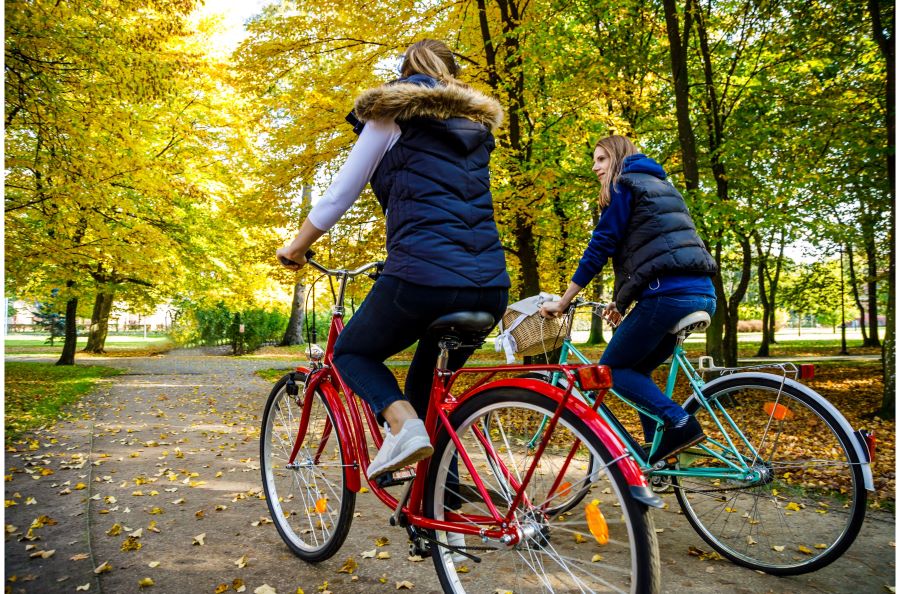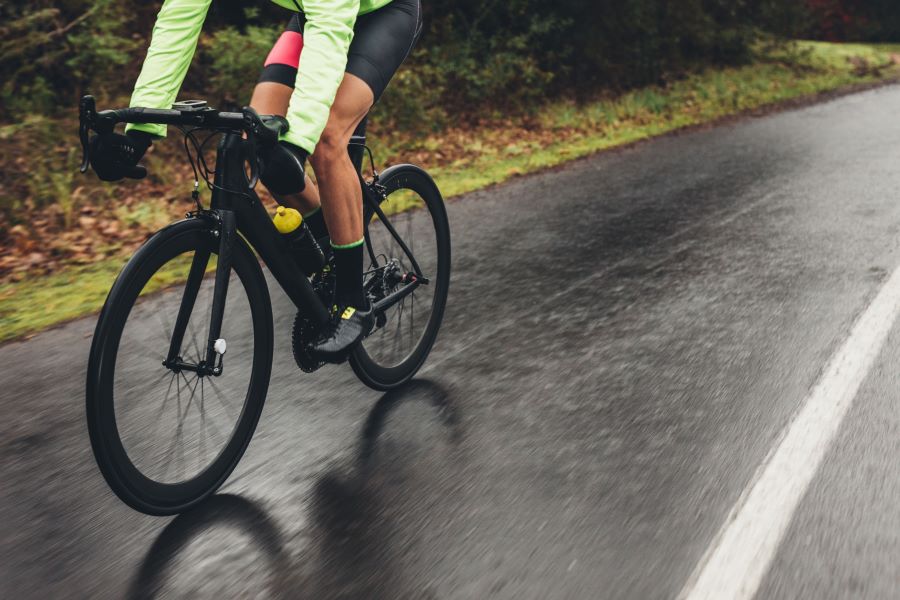This post may contain affiliate links. If you click an affiliate link and make a purchase, I may earn a commission. Also, as an Amazon Associate, I earn from qualifying purchases.--
Exercising regularly and still not seeing the number on the weighing scale go down can be extremely frustrating. But hopping on a bike and going for a ride can be one of the best ways to achieve your weight-loss goals. But to do this, you need to optimize your cadence.
What’s the best cycling cadence for fat loss?
The best cycling cadence to reduce your weight and burn more fat is a higher cadence of around 90 to 110 revolutions per minute performed at a low gear with minimal resistance. This ensures that you are able to burn a maximum amount of fat.
In this article, I discuss what the best cycling cadence for weight loss is and how you can ride a bike to shed as much fat as possible from your waistline.

What is Cycling Cadence?
But when it comes to optimizing weight loss with the help of cycling, people often ask: what is the best cycling cadence for weight loss?
Cycling cadence is a measurement of how well you are pedaling your bike at a given speed.
It is basically the rate at which you pedal, measured by the number of revolutions per minute you complete during each minute of your ride (RPM). In other words, it is the number of times your wheel spins in a period of sixty seconds.
While cycling can often seem very simple, there is a lot of technique that goes into it. This includes cadence, which is often ignored.
But not focusing on your cadence and a bad pedaling technique can lead you to minimize your efficiency and waste valuable energy. The greater your cadence, the greater is the amount of power you produce on the bike.
A cadence of around 60 RPM is considered slow and is often the cadence at which cyclists pedal when traveling uphill. On the other hand, cadences between 80 and 100 are considered higher, which is the cadence used for cycling on flat terrains.
If you’ve ever seen professional cyclists, you might have noticed that they are able to produce a smooth and coordinated pattern when cycling quite effortlessly.
Much of this apparent ease is attributed to their commitment to increasing their cycling efficiency by focusing on having the correct cadence at the right time.
What Should Your Cycling Cadence Be?
The exact answer to this question depends largely upon three things: your cardiovascular fitness, cycling experience, and muscle fiber type.
If you’re a beginner or a recreational cyclist, you may find yourself cycling at a cadence of around 60-80 RPM at first, while professional cyclists usually cycle at an average cadence of 80-100 RPM.
This is because riding at a higher cadence such as over 90 RPM tends to put more stress on your pulmonary and cardiovascular system along with stress on the muscles of your lower limbs.
Regular cyclists have greater muscle strength and better cardiovascular fitness, which is why they are adapted to maintaining their pace for much longer without fatigue kicking in.
Similarly, if you have bulging quads and tend to gain muscle mass very easily in the gym, you will feel much more comfortable cycling at a low cadence.
This is because cycling at a lower cadence means that you will have to push the pedals of your bike with a greater force which will ultimately put greater stress on your knees, hips, and thighs. With larger muscles, this will be much easier for you.
However, if you are lean and don’t gain muscle mass easily, you can expect yourself to be more comfortable pedaling faster at a higher cadence with less force for every stroke on the pedal.
While everyone’s main muscle fiber type and cardiovascular fitness are different and the ideal cadence is highly variable, you should aim for a cycling cadence of around 80-100 RPM as your ultimate goal.
This is because an average cadence of around 80-100 RPM allows you to produce high amounts of sustainable power without losing efficiency, which they tend to do at higher cadence levels as fatigue starts to kick in.
As part of a research by Scott F. et al, researchers at the University of Queensland had 14 recreational riders pedal their bikes at a constant power output of 2.5 watts/kg and cadences of 40, 60, 80, and 100 RPM followed by a cadence of their choosing.
During the process, they measured how much energy they were using, what muscles were being used, and how hard these muscles were being worked.
The results of the study suggested that cycling at a higher cadence of about 80 RPM allowed the cyclists’ quadriceps to produce maximum power on their bikes with minimal energy wastage. (Source)
How to Measure Your Cadence?
Now that we’ve discussed what your ideal cycling cadence should be, it’s only natural for you to think of how you can measure your cadence.
How will you be able to tell if you are cycling at a cadence of 60 RPM or 90 RPM?
The best way to measure your cadence yourself is to count the number of times you lift your knee during a ride for a total of thirty seconds.
This should be done while riding on flat terrain with no speed bumps or traffic signals. Once counted, double that number and you will have your cadence.
Repeat this process two more times and calculate their average to get a more accurate value.
Some bicycles also have sensors attached to them on the crank that help you ascertain your cadence. These sensors give a much more accurate reading of your cadence in real-time as you are riding your bike.

Cycling Cadence for Weight Loss
Higher Cadence, Low Gear
When you’re cycling to reduce your weight, your main goal is to burn as much fat as possible to give you the energy you need to continue cycling. This ultimately helps reduce your waistline.
During the initial stages of your workout, your body uses your body’s glycogen reserve to fulfill your body’s need for energy. Once that storage is depleted, your body uses fat to supply the necessary fuel.
A cadence of around 90-110 RPM in a low gear is considered a high calorie-burning cadence.
This cadence allows you to maintain your workout and burn a maximum amount of fat without getting tired too easily.
According to Healthfully.com, cycling at a higher cadence will also get your heart beating faster. Your cadence should help you achieve a target heart rate range at which your body is able to burn maximum calories.
This should be around 65 to 85 percent of your maximum heart rate.
Lower Cadence, High Gear
While we’ve established that cycling at a higher cadence with low resistance will help you achieve your weight-loss results, it does not mean that cycling at a lower cadence will do the opposite.
In fact, cycling at a lower cadence will also help you lose weight.
The only difference is that a low cadence of around 40-60 RPM is likely to put a greater amount of stress on your knees, thighs, and hips.
As you’re using a higher gear, you’ll have to use more force to push the pedals on your bike, taxing your quadriceps and your skeletal system.
This will not only make your knees sore, courting pain, but will also tire you out much more easily, limiting the duration of your workout as a result.
So while cycling at a low cadence and high gear will consume more energy and in turn, more fat; fatigue will kick in much quicker. This means that you will ride for a much lesser duration and in the long run, you will end up losing less weight than what you had hoped for.
In comparison, a higher cadence stresses your cardiovascular and respiratory systems more rather than stressing your muscles.
Since your cardiovascular system is more stressed, it allows your body to produce energy via aerobic respiration rather than anaerobic respiration, as seen in the case of lower cadence levels.
This allows you to ride for a longer duration without stressing your muscles, ligaments, and tendons.

How to Improve Your Cycling Cadence
Improving your cadence is not something you can accomplish overnight.
After measuring your initial cadence, it can take weeks, even months, before you achieve your ideal cycling cadence. Start with your usual low cadence and slowly work your way up to a higher cadence that is more efficient and can help you visualize your weight-loss goals.
The easiest way to improve your cadence is to click up a gear while riding but try to maintain that same consistent speed.
At first, your body will feel uncomfortable because it’s not adapted to it but eventually you’ll get used to it.
If you usually ride at a low cadence, your body will initially feel uncoordinated while riding at a high cadence until it adapts to it. However, you must maintain your focus during this time so that you don’t end up drifting back to riding at a low cadence.
Incorporating some high cadence cycling workouts, drills, and body maintenance exercises into your daily routine can also help you improve your cadence over longer distances and improve your neuromuscular coordination .
Practicing your pedaling in higher cadences will help make your pedal strokes more efficient, hence reducing energy wastage. Here are some drills that you can practice to improve your cadence:
Drill 1 – Spin Ups
Cycle uphill to the top of a climb. After reaching the top of the climb, click into a gear that puts your cadence around 70-80 RPMs and start to descend.
During your descent, do not shift gears and allow your cadence to gradually increase until you reach the end of your descent.
Repeat this drill at least five times to make your body more habitual of riding at a higher cadence.
Drill 2 – Cadence Intervals
During your normal cycling workout, shift to an easier gear than what you would normally ride at. Ride at this new cadence for five minutes while maintaining your speed before returning to your usual cadence.
Repeat this drill several times during your ride.
Drill 3 – Single Leg Pedaling
If you have a stationary indoor bike at home, you can also make use of that to improve your cadence. When working out on your stationary bike, set one leg free so that only one of your feet is clipped to the pedal and shift to an easier gear than what you normally ride at.
Pedal on this gear for around 30 to 60 seconds. Now repeat the drill with your other leg.
You will eventually notice the pedaling getting much easier with each consecutive drill.
Smart trainer apps such as Zwift and Rouvy can also help you better track your progress while also suggesting the best drills for you to practice to reduce your weight.
By regularly working on improving your cadence, you’ll not only become a faster but also a stronger and more resilient cyclist. You’ll tire out much less easily allowing you to work out for longer hours and burn more calories.
The Bottom Line
While cycling at a higher cadence is the best way to lose weight, it certainly isn’t easy.
If you’re cycling for the first time, it’s highly probable that you’ll find yourself riding at a low cadence of around 40 to 60 RPM.
But there’s nothing to worry about. With regular practice and dedication, you’ll soon find yourself riding your bike with ease at a high calorie-burning cadence that will help you achieve all your weight-loss goals.
